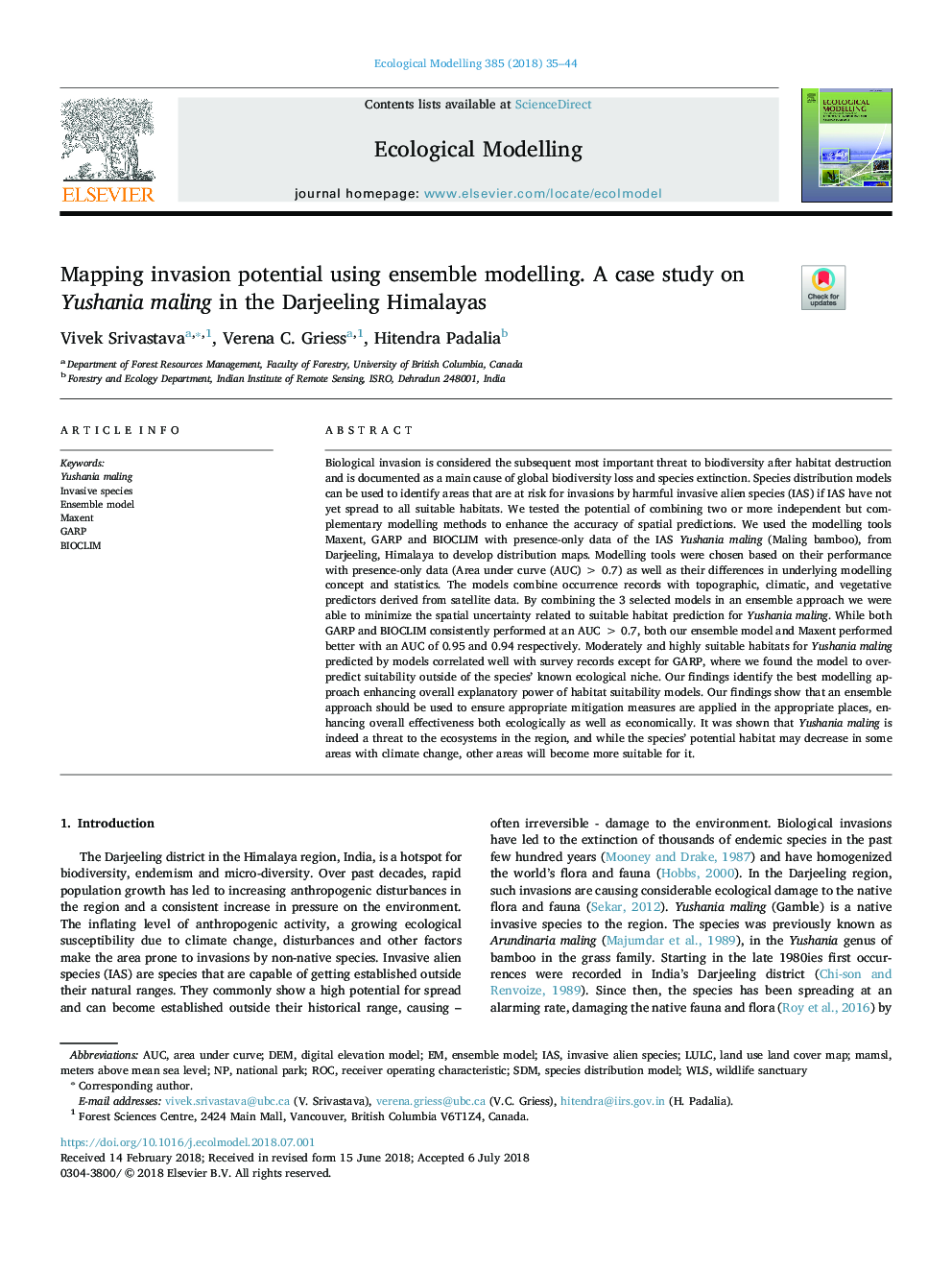| Article ID | Journal | Published Year | Pages | File Type |
|---|---|---|---|---|
| 8845950 | Ecological Modelling | 2018 | 10 Pages |
Abstract
Biological invasion is considered the subsequent most important threat to biodiversity after habitat destruction and is documented as a main cause of global biodiversity loss and species extinction. Species distribution models can be used to identify areas that are at risk for invasions by harmful invasive alien species (IAS) if IAS have not yet spread to all suitable habitats. We tested the potential of combining two or more independent but complementary modelling methods to enhance the accuracy of spatial predictions. We used the modelling tools Maxent, GARP and BIOCLIM with presence-only data of the IAS Yushania maling (Maling bamboo), from Darjeeling, Himalaya to develop distribution maps. Modelling tools were chosen based on their performance with presence-only data (Area under curve (AUC)â>â0.7) as well as their differences in underlying modelling concept and statistics. The models combine occurrence records with topographic, climatic, and vegetative predictors derived from satellite data. By combining the 3 selected models in an ensemble approach we were able to minimize the spatial uncertainty related to suitable habitat prediction for Yushania maling. While both GARP and BIOCLIM consistently performed at an AUCâ>â0.7, both our ensemble model and Maxent performed better with an AUC of 0.95 and 0.94 respectively. Moderately and highly suitable habitats for Yushania maling predicted by models correlated well with survey records except for GARP, where we found the model to over-predict suitability outside of the species' known ecological niche. Our findings identify the best modelling approach enhancing overall explanatory power of habitat suitability models. Our findings show that an ensemble approach should be used to ensure appropriate mitigation measures are applied in the appropriate places, enhancing overall effectiveness both ecologically as well as economically. It was shown that Yushania maling is indeed a threat to the ecosystems in the region, and while the species' potential habitat may decrease in some areas with climate change, other areas will become more suitable for it.
Keywords
Related Topics
Life Sciences
Agricultural and Biological Sciences
Ecology, Evolution, Behavior and Systematics
Authors
Vivek Srivastava, Verena C. Griess, Hitendra Padalia,
